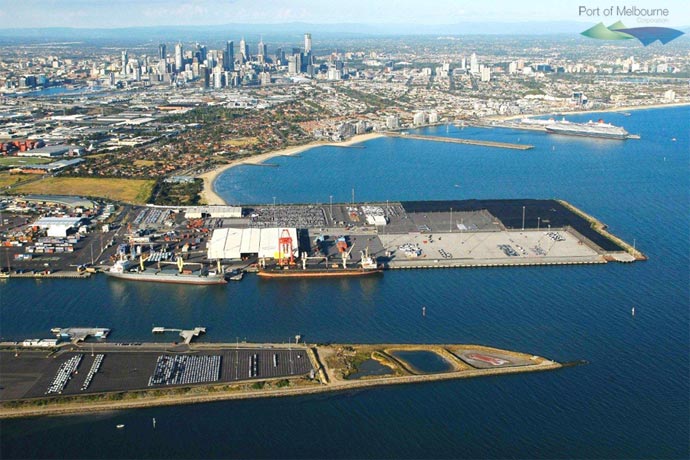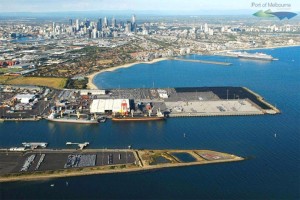

A consortium led by Philippine global port operator International Container Terminal Services, Inc. (ICTSI), has won the bidding for the development of a third international container terminal at the Port of Melbourne in Australia.
Victorian International Container Terminal Ltd (VICTL), owned by ICTSI and its partner Anglo Ports Pty Ltd. of Australia, signed the contract with the Port of Melbourne Corp. on May 2.
VICTL is 90% owned by ICTSI and the rest by Anglo Ports.
The 26-year deal grants VICTL the rights to design, build and commission the new Terminal at berths Webb Dock East 4 and Webb Dock East 5; design, build and commission the new Empty Container Park at Webb Dock East; and operate the Terminal and Empty Container Park (ECP) until 30 June 2040, according to an ICTSI disclosure on May 2.
The company will invest US$508 million in the project, $407 million for the development of the Webb Dock Container Terminal and Empty Container Park for Phase 1 & 2, and $101 million to increase capacity of the terminal to 1.4 million twenty-equivalent units.
The project marks ICTSI’s entry into Australia and further extends the Manila-based company’s portfolio of managed ports to 30 terminals across six continents.
“This new concession represents a major milestone for ICTSI, not only because it is our first concession in Oceania, but also because it establishes us as one of very few truly global operators with facilities on six continents,” said Christian R. Gonzalez, ICTSI head of the Asia-Pacific region.
“It is a premier project in a country that is considered to be a leader in infrastructure development, and we plan to introduce leading edge and proven technologies that will consistently deliver the highest levels of port performance,” Gonzalez said.
“We are likewise excited by the fact that many innovations are geared towards ensuring seamless interaction between the Port, the City of Melbourne, and its surrounding communities, something we believe to be critical in the container terminals of the future,” Gonzalez said.
ICTSI said VICTL’s development for Webb Dock Container Terminal will utilize the best-proven technologies and innovations to deliver fully-automated operations from the gate to the quayside.
“These leading edge solutions will ensure not only superior operating efficiency, but will limit the noise and light impact on surrounding communities,” Gonzalez said.
Construction of the terminal superstructure and facilities is planned to start late this year.
Phase 1 of the terminal, to be ready for operation by 31 December 2016, will have one berth of approximately 330 meters in total fitted with three post-Panamax ship-to-shore cranes, 23.7 hectares of yard and off-dock area with fully automated operations from the gate to the quayside, delivering an estimated capacity of 350,000 TEUs.
The terminal will be able to handle vessels of up to 8,000-TEU capacity. The ECP will be of approximately 10 hectares and will have a capacity of approximately 200,000 TEUs. Phase 1 construction of the terminal and ECP is expected to commence in the fourth quarter of 2014.
Phase 2 of the terminal, to be ready for operation by December 31, 2017, will have two berths of 660 meters in total with five post-Panamax ship-to-shore cranes for a total area of 35.4 hectares.
When fully developed and as required by volume growth, the Terminal will have six post-Panamax ship-to-shore cranes and will be able to handle up to 1.4 million TEU annually and the ECP will have a capacity of 280,000 TEUs.
The ICTSI-Anglo Ports consortium trumped rival bids by port development giant Hutchison Port Holdings of Hong Kong; a consortium formed by CMA CGM of France, ANL Container Line and Macquarie Specialised Asset Management Ltd., and Qube Holdings.
Located in the capital of the State of Victoria, the Port of Melbourne is the largest container and general cargo port in Australia. It has grown with the city of Melbourne and now has around 3,200 commercial ship calls per year and handles over 2.5 million TEUs annually.–– Roumina Pablo




